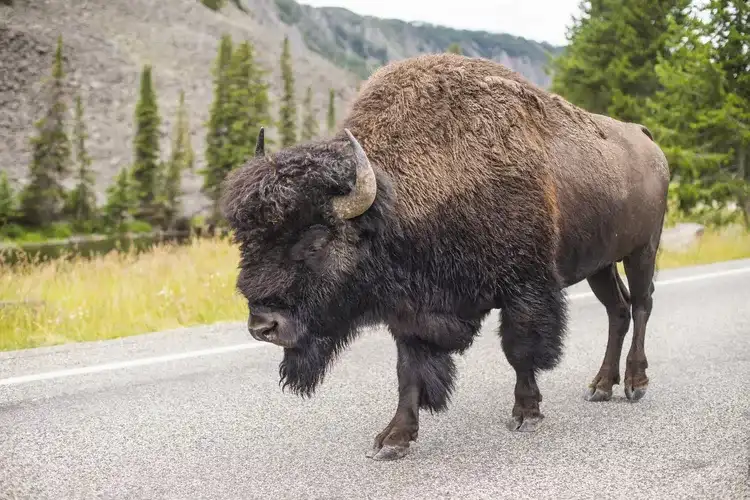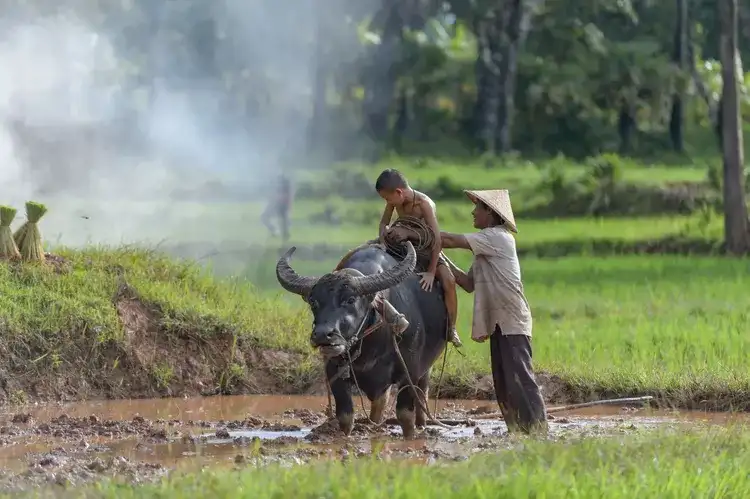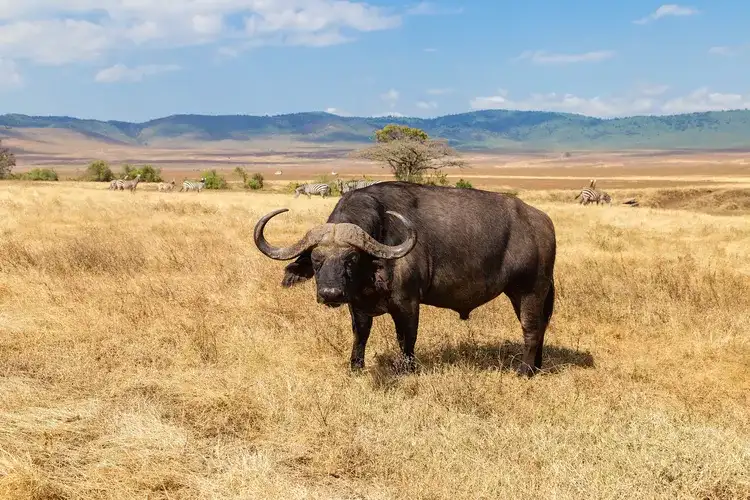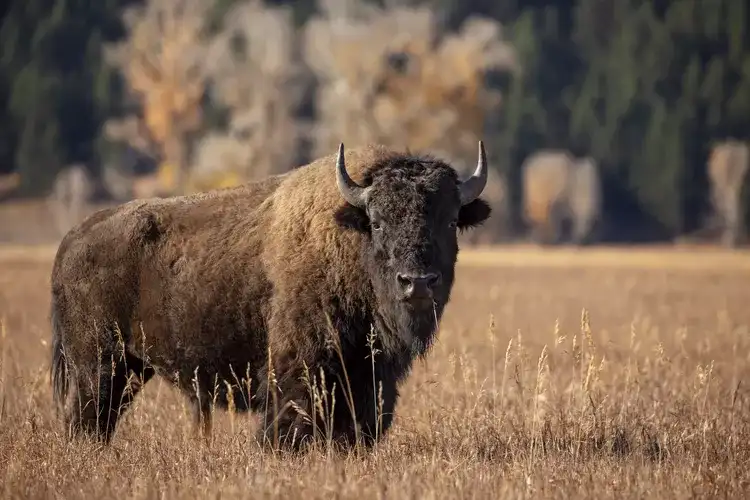Why “Buffalo” Isn’t Really in America
Despite classic songs about buffalo roaming the plains, there are no true buffalo in North America. The herds that graze Yellowstone, the Great Plains, and even California’s Catalina Island are all bison specifically, the American bison. Bison and buffalo are often mixed up, but they’re biologically distinct, separated by continents and millions of years of evolution. Their names get used interchangeably, but the differences are easy to spot when you know what to look for.
Key Differences Between Bison and Buffalo
The easiest way to distinguish these animals is by their appearance and geography:
- Range: Wild American bison live in North America; European bison in Europe; water buffalo in Asia; African buffalo in Africa.
- Size: Most buffalo are larger, ranging from 1,900 to 2,600 pounds, while bison are usually between 1,600 and 2,000 pounds.
- Horns: Bison have short, curved horns. Buffalo’s horns are much longer, arching dramatically outward or curling around their heads.
- Beard and Coat: Only bison have shaggy beards and a thick, woolly coat perfect for harsh winters.
- Shoulder Hump: Bison sport a large, pronounced shoulder hump. Buffalo lack this feature.
Bison and Buffalo: Four True Species
Both bison and buffalo are part of the Bovini tribe in the Bovidae family, which also includes antelope, goats, and sheep. Despite some misleading common names, only a handful are true bison or buffalo:

American Bison
The American bison (Bison bison) is the heavyweight champion of North America’s grasslands. Once, millions roamed from Alaska to Florida. Now, after historic overhunting and disease, their wild numbers are concentrated mostly in protected herds especially in Yellowstone, which is home to 2,300–5,500 animals. Officially designated as the U.S. national mammal, the bison remains a powerful symbol of the American West, but is considered “near threatened” due to continued pressures and genetic mixing with domestic cattle.

European Bison (Wisent)
The European bison (Bison bonasus), or wisent, is the continent’s largest land animal. Closely related to its American cousin, the wisent’s stronghold is in the Bialowieża Forest, straddling Poland and Belarus. Like American bison, wisents were driven to near extinction but are now rebounding thanks to conservation, with about 2,500 mature individuals left in the wild.

Water Buffalo
True water buffalo (Bubalus arnee) thrive in the wetlands and grasslands of Asia, especially India, Nepal, and Southeast Asia. They love aquatic plants, graze in swamps, and are famed as “living tractors” in agriculture. While domestic water buffalo number in the millions, wild populations are endangered just 2,500 remain, threatened by habitat loss, interbreeding, and disease from livestock.

African Buffalo
The African buffalo (Syncerus caffer) is found only in sub-Saharan Africa. With four recognized subspecies, including the famous Cape buffalo, these animals are strong and unpredictable. Their horns curve like handlebars, and they play a critical ecological role across savannas and forests. The population hovers around 400,000 but is still considered near threatened due to disease, hunting, and habitat changes.
Spotting the Differences: What to Look For
Even without a field guide, it’s easy to tell bison from buffalo:
- If it has a humped shoulder, stubby horns, a large head, and a thick, shaggy coat it’s a bison.
- If it’s sleeker, with long horns that curve outward or spiral, and lacks a beard or hump it’s a buffalo.
American bison usually look hairier and have heads that hang lower than European bison, thanks to their grazing habits. Water buffalo horns point up and in, while African buffalo horns curve downward and then out and around.
Frequently Asked Questions
Why are bison called buffalo in the U.S.?
French fur trappers in the 1600s called the bison “boeuf” (meaning “beef”), which evolved into “buffalo.” The name stuck, even though it’s scientifically inaccurate.
Which animals roam Yellowstone buffalo or bison?
The vast herds in Yellowstone are American bison. No true buffalo exist in North America’s wilds.
Can bison and buffalo breed with cattle?
Yes, bison and buffalo can cross with domestic cattle. The result is the “beefalo” a hybrid bred for meat production. Most beefalo are sterile, and the species is officially recognized by the USDA.
Bison and buffalo are often confused, but their differences are clear when you know what to look for location, horns, humps, and coats. The next time you see one of these massive grazers, you’ll know exactly which legend you’re witnessing, and why these animals matter far beyond their misunderstood names.





